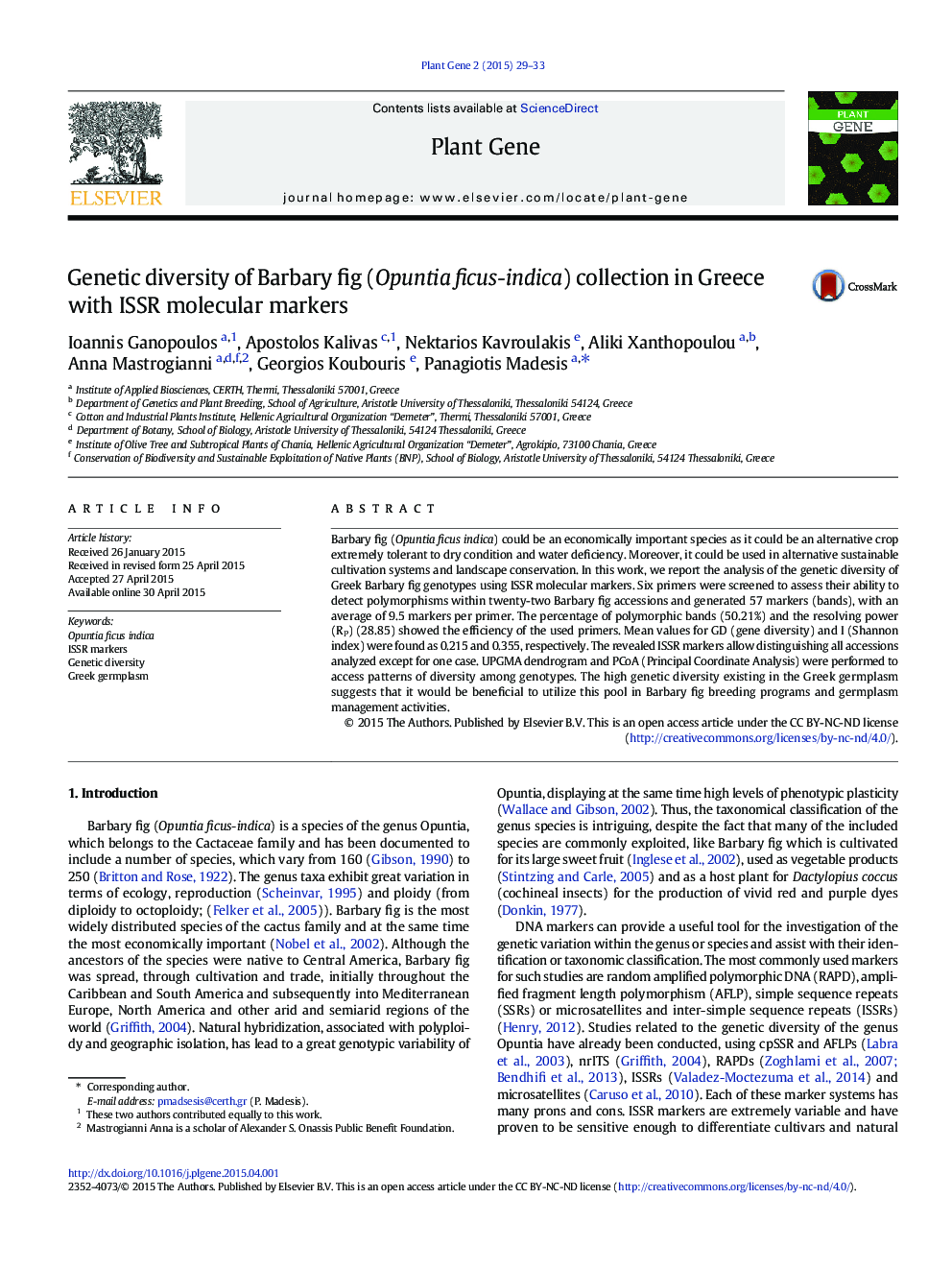| Article ID | Journal | Published Year | Pages | File Type |
|---|---|---|---|---|
| 2824000 | Plant Gene | 2015 | 5 Pages |
Abstract
Barbary fig (Opuntia ficus indica) could be an economically important species as it could be an alternative crop extremely tolerant to dry condition and water deficiency. Moreover, it could be used in alternative sustainable cultivation systems and landscape conservation. In this work, we report the analysis of the genetic diversity of Greek Barbary fig genotypes using ISSR molecular markers. Six primers were screened to assess their ability to detect polymorphisms within twenty-two Barbary fig accessions and generated 57 markers (bands), with an average of 9.5 markers per primer. The percentage of polymorphic bands (50.21%) and the resolving power (RP) (28.85) showed the efficiency of the used primers. Mean values for GD (gene diversity) and I (Shannon index) were found as 0.215 and 0.355, respectively. The revealed ISSR markers allow distinguishing all accessions analyzed except for one case. UPGMA dendrogram and PCoA (Principal Coordinate Analysis) were performed to access patterns of diversity among genotypes. The high genetic diversity existing in the Greek germplasm suggests that it would be beneficial to utilize this pool in Barbary fig breeding programs and germplasm management activities.
Related Topics
Life Sciences
Agricultural and Biological Sciences
Plant Science
Authors
Ioannis Ganopoulos, Apostolos Kalivas, Nektarios Kavroulakis, Aliki Xanthopoulou, Anna Mastrogianni, Georgios Koubouris, Panagiotis Madesis,
